Archive for June, 2022
Toyota Forklift dealers have the industry’s most comprehensive material handling solutions. From a single forklift to an entire fleet, Toyota’s quality, durability, reliability, and value are built-in thanks to advanced technology and the world-renowned Toyota Production System.
You may be asking why you should consider Toyota’s electric forklift models over IC forklifts or other brands. Here are the advantages of electric drives over IC drives:
- Lower maintenance costs, resulting in savings over the life of the forklift
- Electric drives accelerate faster and provide a smoother driving experience for the operator
- Electric forklifts experience less downtime, resulting in more productivity
- In California, you can get ahead of CARB’s 2035 zero-emission mandate
Here are the top 5 electric forklifts in Toyota’s diverse range of products.
#1 Toyota’s 3-Wheel Electric Forklift
Toyota’s 3-Wheel Electric leads the industry in run time, travel speeds, and lift/lowering rates. Check out these impressive stats. Toyota’s 3-Wheel Electric is:
- 15 percent more energy efficient than the next competitor
- Up to 23 percent faster in travel speed
- Up to 8 percent faster in average lift/lower speed
Toyota’s 3-Wheel Electric Forklift also fits in narrow aisles, is easy to maintain, and has a 40 percent longer battery life than the competition. No wonder it is a top seller in Toyota’s forklift line.
#2 Toyota’s Electric Walkie Pallet Jack
Toyota’s Electric Walkie Pallet Jack is a versatile, multi-use solution for almost any application. It is great for mid-distance warehouse runs and excellent for loading and unloading trailers. It is the first to offer a factory option for an integrated fork scale that can calculate weight as it lifts the load.
#3 Toyota’s Electric Order Picker 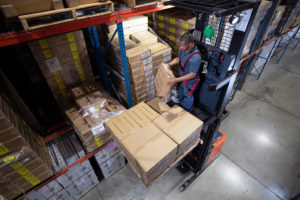
Need a straightforward solution to retrieve orders? Toyota’s Electric Order Picker is the answer. Its mast rises to 390 inches to reach your tallest racks and quickly moves around narrow aisles and tight spaces. It also features optional wire guidance and double rail guidance systems to minimize rack impact and optional Lift Logic technology to monitor lift height for safe operation.
#4 Toyota’s Electric Reach Truck
Toyota’s Electric Reach Truck is the truck you need for dock-to-stock, stock-to-dock, and optimal visibility in the second-level pallet position. Its open view mast optimizes forward visibility, while its sturdy mast construction minimizes mast sway. It is the perfect warehouse equipment to help you reach higher and work smarter.
#5 Toyota’s Electric Walkie Stacker
Toyota’s Electric Walkie Stacker has a mast capable of raising and lowering loads for light-duty stacking. It is an excellent option for short, and mid-distance runs in busy warehouses. If you are looking for warehouse equipment to handle narrow aisle storage, reach storage racks up to 12 feet and lift loads to 2,500 lbs., Toyota’s Electric Walkie Stacker is your solution.
Do you need help choosing material handling equipment? We can help you decide which electric forklift is right for you. Our seasoned material handling experts know the ins and outs of every piece of material handling equipment available. Contact us for a free on-site consultation today.
According to the U.S. Department of Labor, the top five places people get injured in the warehouse are docks, forklifts, conveyors, materials and storage, and mechanical lifting and handling.
A safety-first mindset can help everyone in your facility stay safe and avoid injuries. Here are nine forklift safety products designed to improve workplace safety.
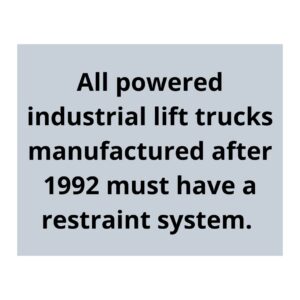
#1 Brake Lights and Headlights
OSHA requires brake lights and headlights are used in environments “where general lighting is less than two lumens per square foot.”
If standard lights are not bright enough, replace them with LED lights.
#2 Blue Lights
Blue lights aimed at the floor illuminate the front and back area of a forklift to let pedestrians and other forklift drivers know a forklift is approaching.
#3 Strobe Lights
Strobe lights placed at eye level warn others to stay alert.
#4 Fork Tilt Warning Lights
Warning lights in the cabin can alert drivers when the forks are misaligned.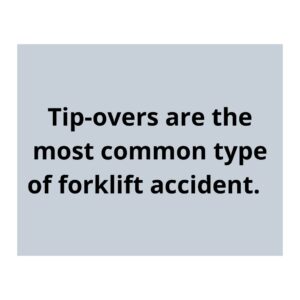
#5 Seat Belts
Seat belts keep operators secure during tip-overs, the most common type of forklift accident.
#6 Backup Alarms
Backup alarms should be installed and working on every piece of moving equipment in your facility.
#7 Blind Spot Cameras
Blind spot cameras can be beneficial to forklift operators to see around blind corners and other obstructive views.
#8 Horns
OSHA requires all forklift drivers to have access to “an operator-controlled horn, whistle, gong or another sound-producing device.” Horns allow them to alert others to blind corners or intersections where visibility is limited.
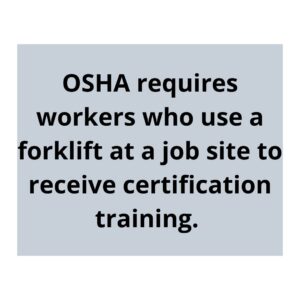
#9 Operator Safety Training
All forklift drivers must complete an operator safety training course to maintain OSHA compliance.
Safety training teaches forklift drivers about:
- A safety-first mindset
- OSHA safety rules and regulations
- Safe driving techniques
- Safety checklists
- And more
Our professional trainers teach a comprehensive operator safety training program with a combination of classroom and hands-on instruction. We have classes in Santa Fe Springs on the 1st and 3rd Friday of each month. Click here to sign up.
Our expert trainers also teach Train the Trainer courses, refresher courses, and group classes at your location. Contact us to schedule a class at your facility.
A safety-first mindset and proper forklift safety products and training can prevent accidents. Does your facility need a safety tune-up? Sign up for a complimentary safety consultation from our experienced material handling professionals.
It’s no secret that forklift safety is essential for operators and pedestrians. These frightening statistics from The Occupational Safety and Health Administration (OSHA) show just how crucial it is:
- OSHA’s most recent estimates indicate that between 35,000 and 62,000 injuries involving forklifts occur annually.
- On average, 95 people are seriously injured in a forklift accident every day, and one person is killed in a forklift accident every four days.
- 36% of forklift-related deaths are pedestrians.
We hope operator and pedestrian forklift safety is high on your importance list. Learn 11 tips to help improve forklift safety at your warehouse, distribution center, or facility.
- Increase pedestrian awareness of forklifts. Add warning lights to increase forklift travel visibility, backup alarms to alert pedestrians to nearby forklift traffic, and floor tape to mark pedestrian walkways.
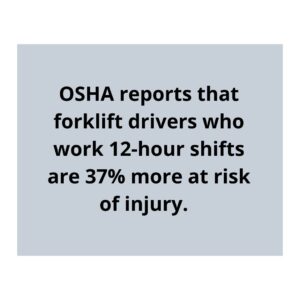 Look for forklifts with speed control features. Speed control features allow you to set the speed limits on your forklift drivers. Consider adding an aftermarket speed control kit if your forklift does not have one.
Look for forklifts with speed control features. Speed control features allow you to set the speed limits on your forklift drivers. Consider adding an aftermarket speed control kit if your forklift does not have one. - Limit forklift operators to shorter shifts. OSHA reports that forklift drivers who work 12-hour shifts are 37% more at risk of injury.
- You could also add an impact manager. An impact manager records the time and day of a forklift accident and measures the size of the impact so you can investigate and implement prevention measures. It also activates an alarm that turns off the forklift until a supervisor checks it out and enters a security code to regain function.
- Be extremely careful when tilting a raised mast. Tilting a raised forklift mast is a common cause of forklift accidents. Toyota’s Active Mast Function Control System limits forward and rear tilt speed to help prevent forward tip-overs.
- Don’t exceed the capacity of your forklift. Every forklift includes a data tag with weight limitations. Check yours to ensure you never exceed the limit.
- Make sure your forklift fleet has common safety features. Check for seatbelts, welded overhead guards, manually operated horns, operator assist grips, and skid-resistant entry and exit steps.
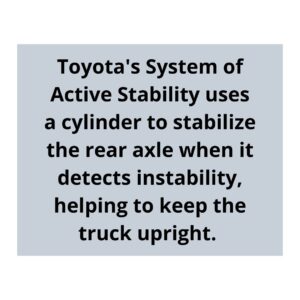
- Consider buying forklifts with advanced safety features. Toyota forklifts have advanced safety features, including its System of Active Stability, Active Mast Controls, and Automatic Forklift Levelers. These features help prevent tip-overs and other common forklift accidents. For example, Toyota’s System of Active Stability uses a cylinder to stabilize the rear axle when it detects instability, helping to keep the truck upright.
- Look for forklifts ranked #1 in safety. Toyota forklifts consistently rank #1 for safety in an independent study conducted by Peerless Research Group.
- Install mirrors and barriers. Mirrors allow forklift operators to see around blind spots, and walls can create a physical structure to help prevent serious injuries if an accident does occur.
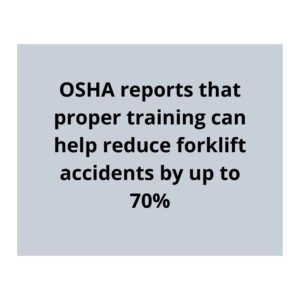 Sign up for Forklift Operator Safety Training. OSHA reports that proper training can help reduce forklift accidents by up to 70%. Our three-hour forklift operator safety training includes classroom and hands-on training by Toyota-certified trainers.
Sign up for Forklift Operator Safety Training. OSHA reports that proper training can help reduce forklift accidents by up to 70%. Our three-hour forklift operator safety training includes classroom and hands-on training by Toyota-certified trainers.
There are many ways to increase forklift safety, some depending on your specific facility. We offer complimentary safety checkups from experienced material handling professionals. Contact us to schedule a free safety consultation at your facility today.
A facility energy audit is an opportunity to have an experienced, trusted representative from your local material handling solutions provider come to your facility and look for opportunities where you may be able to increase efficiency and lower operational costs based on the use of forklift power options and facility power layouts (i.e. storage locations, charging locations, etc.).
Most importantly: They’ll recommend practical solutions tailored to your specific application and the way your business operates.
Often, these solutions are low-cost, such as process improvements or rotating your existing fleet. Investing in new charging systems, batteries, or other equipment may also be recommended – either now, or in the future when it’s time to replace existing equipment (allowing you to plan ahead for the changes and incorporate them into your budget in advance).
In this post, explore the areas that may be addressed in a facility energy audit.
Auditing Forklift Charging Stations:
Ideally, with the assistance of an electrician or facilities manager, auditors will examine your current battery charging station.
Forklifts keep your business running, and charging stations keep your electric forklifts running. The audit will help you use these areas as efficiently as possible, enabling you to maximize every minute of every shift. The recommendations may pertain to station location, number of charging stations and charging station schedules.
Auditing IC Forklift Fueling Stations:
Auditors will examine IC fueling stations from a variety of angles. They may consider how many trucks the stations are servicing, how much fuel is being consumed, how frequently trucks need to be refueled, and station locations in relation to other key areas and operational spaces.
Making sure that fueling locations and scheduling are convenient to operators in the flow of their work and natural breaking points, such as shift changes, can add up to a major impact on your operation’s efficiency and ROI.
Auditing Forklift Battery Storage:
Your current battery storage facilities and practices will also be evaluated.
Space is often at a premium, especially in warehouses and distribution centers. For those applications needing to store additional lead-acid batteries for swap-outs to keep their equipment moving, this audit can help make sure the batteries are stored with as small a footprint as possible. Auditors may examine storage space, location, and exchange locations. This kind of audit may also help you assess the ROI of alternative energy sources, such as lithium-ion batteries.
Auditing Facility Power Considerations:
Not only will the auditors look at your usage capacity (the maximum amount of power your facility is able to provide to your equipment), but also the types of electrical systems your facility already runs, your current overall throughput (the amps consumed daily), and — if different — your throughput during your peak season.
With these insights, you’ll be able to make sure that your facility is capable of providing the power your equipment needs — both in your typical day-to-day operations and in those seasons when you’re running fastest and working hardest.
Does your business need a facility energy audit? Contact us to schedule a free on-site consultation with a Los Angeles material handling expert.
Written by Jake Stewart, Digital Marketing Supervisor, Toyota Material Handling




 Look for forklifts with speed control features. Speed control features allow you to set the speed limits on your forklift drivers. Consider adding an aftermarket speed control kit if your forklift does not have one.
Look for forklifts with speed control features. Speed control features allow you to set the speed limits on your forklift drivers. Consider adding an aftermarket speed control kit if your forklift does not have one. 
 Sign up for Forklift Operator Safety Training. OSHA reports that proper training can help reduce forklift accidents by up to 70%. Our three-hour
Sign up for Forklift Operator Safety Training. OSHA reports that proper training can help reduce forklift accidents by up to 70%. Our three-hour